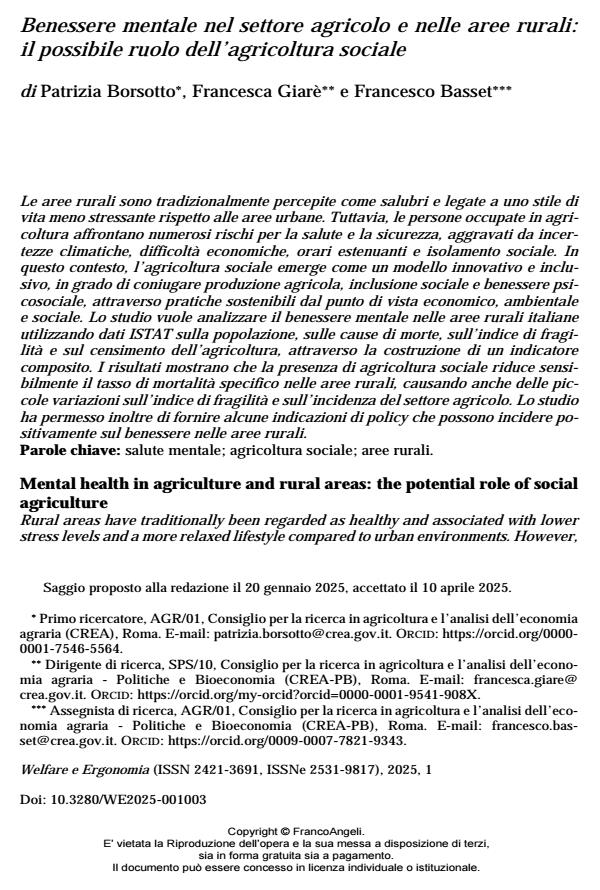Mental health in agriculture and rural areas: the potential role of social agriculture
Journal title WELFARE E ERGONOMIA
Author/s Patrizia Borsotto, Francesca Giarè, Francesco Basset
Publishing Year 2025 Issue 2025/1
Language Italian Pages 13 P. 37-49 File size 121 KB
DOI 10.3280/WE2025-001003
DOI is like a bar code for intellectual property: to have more infomation
click here
Below, you can see the article first page
If you want to buy this article in PDF format, you can do it, following the instructions to buy download credits

FrancoAngeli is member of Publishers International Linking Association, Inc (PILA), a not-for-profit association which run the CrossRef service enabling links to and from online scholarly content.
Rural areas have traditionally been regarded as healthy and associated with lower stress levels and a more relaxed lifestyle compared to urban environments. However, farmers often face numerous health and safety challenges, which are further intensified by climate uncertainties, economic hardship, demanding working hours and social isolation. In this context, social agriculture emerges as an innovative and inclusive model that combines agricultural production with social inclusion and psychosocial well-being through economically, environmentally and socially sustainable practices. This study investigates mental well-being in rural areas of Italy by constructing a composite indicator based on ISTAT data including population statistics, causes of death, the fragility index and agricultural census information. The results reveal that the presence of social agriculture is significantly associated with lower mortality rates in rural areas, along with modest improvements in the frailty index and in the overall contribution of the agricultural sector. The study offers preliminary insights to inform policy strategies aimed at enhancing well-being in rural communities.
Keywords: mental health; social agriculture; rural areas.
Patrizia Borsotto, Francesca Giarè, Francesco Basset, Benessere mentale nel settore agricolo e nelle aree rurali: il possibile ruolo dell’agricoltura sociale in "WELFARE E ERGONOMIA" 1/2025, pp 37-49, DOI: 10.3280/WE2025-001003